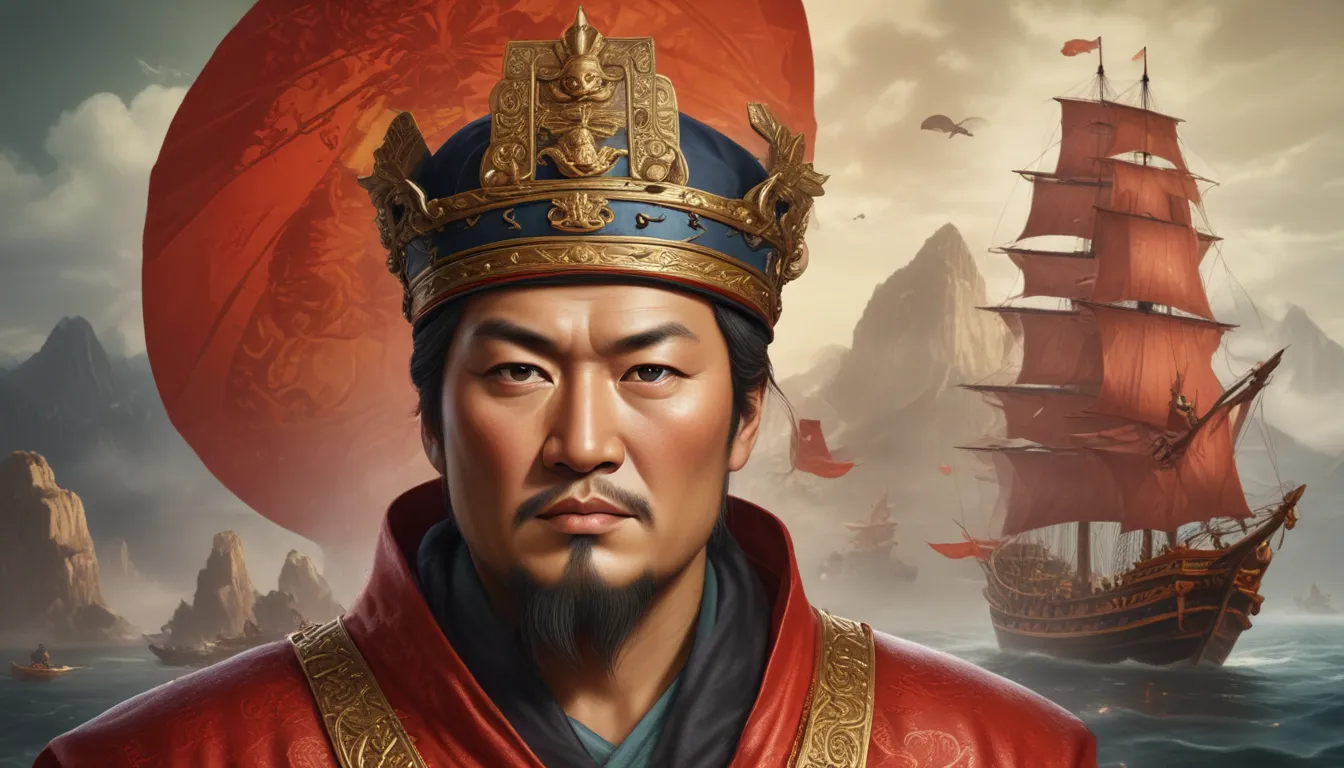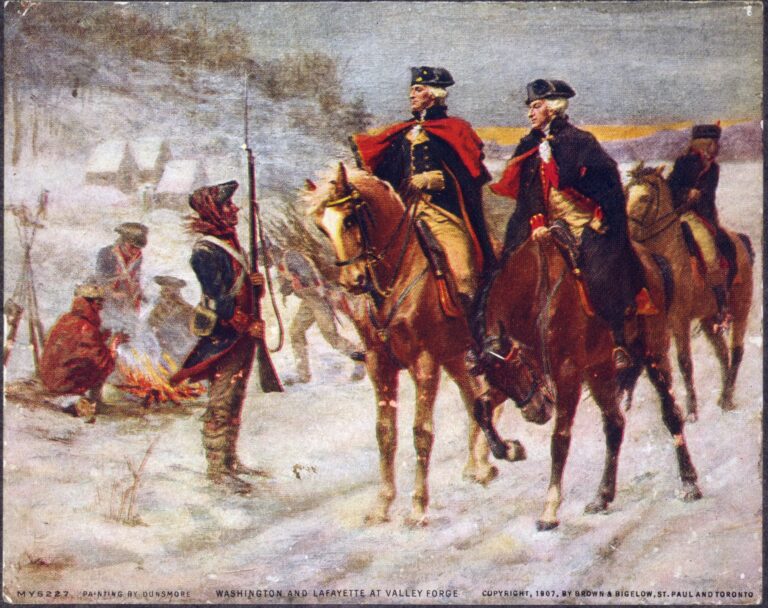The images in our articles may not match the content exactly. They are used to grab your attention, not to show the exact details in the text. The images complement the text but do not replace it.
Have you ever marveled at the incredible journeys that shaped history long before the era of GPS and modern navigation? Zheng He is a name that looms large in the annals of exploration, leading some of the most awe-inspiring voyages across the seas. Born into a vastly different world, this Chinese explorer’s achievements are nothing short of legendary. With a fleet that surpassed those of Europe’s explorers centuries later, Zheng He’s expeditions reached the far corners of the known world, from Africa to the Middle East, fostering trade and cultural exchanges that endure through generations. Are you ready to embark on a voyage back in time? Let’s uncover 16 fascinating facts about Zheng He that continue to captivate historians and adventurers alike.
Who Was Zheng He?
Zheng He, originally known as Ma He, was a Chinese mariner, explorer, diplomat, and fleet admiral during the early Ming Dynasty. He is renowned for his monumental voyages that propelled Chinese ships through Southeast Asia, South Asia, Western Asia, and East Africa. From 1405 to 1433, Zheng He spearheaded seven major expeditions, showcasing the might and reach of the Ming Dynasty to the world. His fleets included some of the largest wooden ships ever constructed.
Early Life and Rise to Power
- Zheng He was born in 1371 in present-day Yunnan Province, China, to a Muslim family belonging to the Hui ethnic group. His life took a dramatic turn when he was captured by Ming soldiers and castrated to serve in the imperial court, a common practice for young boys entering service at the time.
- Despite facing early adversities, Zheng He ascended through the ranks owing to his intelligence, loyalty, and military prowess. He caught the eye of the Yongle Emperor, who entrusted him with leading the expeditions that would etch his name in history.
The Epic Voyages of Zheng He
- The first expedition in 1405 set sail with a fleet of 317 ships manned by nearly 28,000 crew members, showcasing the vast resources and ambitions of the Ming Dynasty.
- Zheng He’s ships were technological marvels of their time, with the largest, known as “Treasure Ships,” reportedly measuring up to 400 feet in length. This made them several times larger than the ships used by European explorers like Christopher Columbus.
- His voyages spanned over 30 countries across Asia and Africa, establishing Chinese influence and uncovering trade routes that had been dormant for centuries.
Diplomacy and Trade
- Beyond mere exploration, Zheng He’s missions held diplomatic significance, bringing envoys from over 16 countries to China. This facilitated the establishment and fortification of trade relationships and political alliances.
- He transported goods, both common and exotic, ranging from silk and porcelain to giraffes and zebras, presented as gifts to the Chinese court from distant lands.
Zheng He’s Legacy and Impact
- Zheng He’s voyages showcased the power and technological advancement of the Ming Dynasty to the world, marking a zenith in Chinese maritime history unparalleled by any other civilization of the time.
- Despite his remarkable contributions, Zheng He’s accomplishments were not widely acknowledged beyond China until centuries later. His expeditions came to a halt following the demise of the Yongle Emperor, with China turning inward and relinquishing large-scale maritime exploration.
- The reason for the cessation of the voyages remains a source of debate among historians, with theories ranging from the exorbitant costs to shifting political power and priorities within the Ming Dynasty.
- Zheng He’s demise during his seventh voyage in 1433 signified the conclusion of China’s era of maritime exploration until the modern age.
- In recent times, Zheng He has emerged as a symbol of China’s historical maritime triumphs and its aspirations for a new era of global engagement and leadership.
- Artifacts and records from his voyages have been unearthed in countries as distant as Kenya, serving as tangible proof of the profound impact of his journeys.
- Zheng He’s navigational charts and comprehension of the monsoon winds were exceptionally advanced for his time, contributing significantly to the field of navigation.
- Today, Zheng He is lauded in China and beyond, with museums, literature, and films dedicated to his life and expeditions, ensuring that his legacy endures to inspire future generations.
A Lasting Tribute to Zheng He’s Legacy
Zheng He’s voyages transformed our understanding of exploration, cultural exchange, and maritime supremacy. Beyond mere maritime voyages, they embodied monumental achievements in navigation and diplomacy, weaving together a tapestry of diverse cultures across Asia and Africa. They serve as a poignant reminder of an era when curiosity and the pursuit of knowledge transcended the familiar confines of home shores. Zheng He’s legacy, characterized by courage, innovation, and intercultural connections, continues to motivate adventurers and scholars alike. As we navigate uncharted waters in our own time, let’s embrace the spirit of Zheng He—welcoming the vast, interconnected world with open minds and an unquenchable curiosity for discovery. His narrative, a beacon of human accomplishment and unity, underscores that great voyages not only chart new territories but also unite worlds, bringing humanity closer together.
Frequently Asked Questions
Who was Zheng He?
Zheng He, also known as Ma He, was a Chinese explorer, mariner, diplomat, and fleet admiral during the early Ming Dynasty. Born into a Muslim family, he was captured and castrated by Ming forces as a boy but rose to prominence in the Chinese imperial court. He’s best known for his seven epic voyages between 1405 and 1433, leading massive fleets of ships across Asia and Africa to establish Chinese maritime presence and expand trade networks.
What made Zheng He’s ships remarkable?
His ships were engineering marvels of their time, significantly larger than any other wooden ships in history. The treasure ships, as they were called, could be up to 400 feet long and 160 feet wide. These giants of the sea dwarfed European ships of the same era and were equipped with advanced navigational tools, including compasses and detailed maps, enabling long-distance voyages across unknown waters.
How many voyages did Zheng He lead?
Zheng He commanded a total of seven voyages from 1405 to 1433. Each expedition ventured further than the last, reaching the shores of Southeast Asia, India, the Middle East, and even the East African coast. These voyages were not just exploratory but also served diplomatic and trade purposes, establishing Chinese influence across the Indian Ocean.
What was the purpose of Zheng He’s voyages?
His voyages aimed to display the might and wealth of the Ming Dynasty to the world, establish and strengthen trade relations, collect tribute from lesser powers, and extend the Chinese sphere of influence. They were also diplomatic missions, fostering peace and cooperation between China and other nations through the exchange of goods and culture.
Did Zheng He discover America?
There’s no concrete evidence to support claims that Zheng He discovered America. While some theories suggest his fleet might have reached the American continents, mainstream historians and scholars agree that his voyages did not extend beyond the African coast and the Arabian Peninsula. The idea remains a topic of speculation and debate.
What legacy did Zheng He leave behind?
Zheng He’s legacy is a testament to China’s maritime prowess in the 15th century. His voyages demonstrated the technical and navigational capabilities of the Ming Dynasty, fostering trade and diplomatic relations across Asia and Africa. However, after his death, Chinese maritime exploration declined as the government adopted more isolationist policies. Today, he is celebrated as one of China’s greatest explorers, symbolizing the country’s historical spirit of exploration and cultural exchange.
How did Zheng He’s voyages impact the world?
His expeditions had a profound impact on global trade networks and intercultural exchanges. They helped integrate economies across Asia, the Middle East, and Africa into a more interconnected system. Culturally, these voyages facilitated the spread of goods, technologies, and ideas, enriching societies and fostering a greater understanding among diverse peoples. Zheng He’s journeys are a significant chapter in the history of globalization, highlighting the interconnectedness of our world long before the modern era.
Conclusion
Zheng He’s legacy transcends time, resonating with explorers and scholars alike as a testament to human ingenuity and unity. His epic voyages not only reshaped the world’s understanding of exploration and diplomacy but also laid the groundwork for global interconnectedness that endures to this day. As we navigate our own uncharted paths, may we draw inspiration from Zheng He’s unwavering spirit of discovery and cultural exchange, bridging divides and celebrating the diversity of our shared humanity. Let his story serve as a beacon of hope and enlightenment, guiding us toward a future where exploration, understanding, and unity reign supreme.






